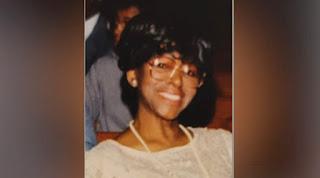
Her own mother was still searching for her while she lay buried under the wrong name for decades. Dorothy Glanton vanished from Chicago in December 1987, and for years her family lived in painful uncertainty—hoping, praying, and never knowing what became of her. Months after she disappeared, a woman’s body washed ashore along the Michigan lakeshore. But the people tasked with identifying her made a critical mistake.
They described the remains as belonging to a white woman, possibly in her 40s or 50s. In reality, Dorothy was a 71-year-old Black woman from Alabama, a proud part of the Great Migration generation that reshaped the American North in the 20th century.That single misidentification was enough to erase her from the record of Chicago’s missing persons.
Her name was never connected to the Jane Doe file, and the trail went cold. Her family continued searching for answers, never imagining that Dorothy had already been found but misclassified by those meant to speak for the voiceless. For decades, her remains rested in anonymity, her story forgotten by systems that too often fail the most vulnerable.
It wasn’t until advances in forensic science—and the persistence of modern investigators—revisited the old case that the truth finally surfaced. Using improved DNA technology and family genealogy research, experts were able to restore Dorothy Glanton’s name to her remains, bringing long-overdue closure to her surviving relatives.
For those who loved her, the revelation was both heartbreaking and healing. After nearly four decades, they could finally say goodbye properly. Dorothy’s story has since reignited broader discussions about racial bias in early forensic investigations and the importance of reexamining old cases with modern tools and compassion. In death, Dorothy Glanton’s identity was at last reclaimed, restoring dignity that should never have been lost.




